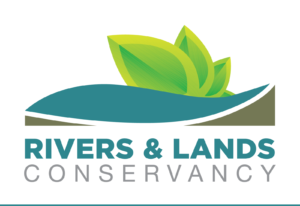
Creating a summer oasis in your garden helps wildlife thrive despite high temperatures.
As the community weathers July heatwaves and braces for August, it’s hard not to peer out the windows and wonder how wildlife is managing. Finding food, water, and shelter during the summer can be extra difficult for wild animals, especially for creatures who have been displaced by wildfires.
While extreme heat events are challenging for fauna, gardeners can provide refuge and food sources by adapting some simple gardening practices to create backyard havens particularly suited for beneficial wildlife friends such as birds, butterflies, bees, bats, and more.
Choosing heat-resistant plants is the first step in gardening to support wildlife. While summer usually provides a banquet for pollinators and terrestrial birds, intense heatwaves can shorten bloom time and cause plants to go to seed more quickly. Native plant species that are adapted to local climate conditions not only provide the best food and shelter for local wildlife but are also resilient to high temperatures.
Providing feeding stations can be helpful but can also concentrate birds into dense groups where disease is easily spread. Salmonellosis, trichomoniasis, avian pox and other diseases that are prevalent in bird populations can be exacerbated. Using multiple feeders to avoid overcrowding, cleaning seed feeders every two weeks and hummingbird feeders daily can lessen the spread of disease. However, the best way to feed the birds is to grow native plants that provide nectar and seeds throughout the summer.
California fuchsia (Epilobium canum), which blooms in the summer and attracts hummingbirds to its bright red flowers, is a drought tolerant and fire resistant native. Native sage (Salvia spp.) is also drought tolerant and attractive to hummingbirds. Lesser and Lawrence’s goldfinches appreciate summer blooming yarrow (Achillea millefolium).. If you are lucky enough to have families of quail visiting your yard they value California lilac (Ceanothus spp.) seeds and will snack on the leaves of California buckwheat (Eriogonum fasciculatum).
Some of California’s larger native shrubs provide not only food, but dense vegetation and much needed shade that support birds, insects and small mammals. Elderberry (Sambucus spp.) are heavily used by a variety of bird species, providing cover and nesting for hummingbirds while producing berries enjoyed by many wildlife species. Berry eaters like California scrub jays and California towhees are also fans of California coffeeberry (Frangula californica) which fruits in late summer and fall.
Gardeners can help native plants thrive by providing a thick layer of organic mulch to keep the soil cooler for the plants and more hospitable to wildlife. This creates a microenvironment that supports beneficial insects and provides a refuge from the heat.
Adding water features to your garden can also support thirsty wildlife. Water elements that make noise like solar fountains and drip jugs can help animals find water more easily. Moving water also deters mosquitoes, which prefer stagnant shallow water to breed. Shallow bird baths with strategically placed stones or other objects offer perches for insects like bees and an escape route for insects that fall in. Water features should be strategically placed to discourage feline predation on birds, topped off with water and cleaned regularly.
It’s no secret to gardeners that finding plants that can thrive in the unique constraints of their personal garden often involves trial and error. Finding the right combination to best support wildlife can take some experimenting as well. Yet, this is half the fun. If you track which plants thrive and which wildlife species frequently utilize your summer refuge, you can refine your plant palette and garden features to support as many species as possible.
If you are curious what plants thrive and bloom throughout the summer heat, visit one of the native plant gardens Rivers & Lands Conservancy has installed on partner properties with the assistance of community volunteers. Our gardens at Martha McLean-Anza Narrows Park, Bryant Park and Sycamore Highlands Park have plenty of inspiration for supporting local wildlife. You can also visit the California Native Plant Gardens page on our website to view photos and plant lists.
If you have no space for a garden, you can still join us in the fall and volunteer for maintenance and planting events at our community native California plant gardens. Check our website for upcoming events. Every pocket of native of habitat helps and we welcome you in joining us to help our wildlife thrive.
Rivers & Lands Conservancy connects our community to natural, wild, and open spaces of Southern California through land conservation, stewardship, and education.
Native Plant Gardens: https://riversandlands.org/nativeplantgardens/
Rebecca K. O’Connor is the Co-Executive Director of Rivers & Lands Conservancy, has an MFA in Creative Writing and Writing for the Performing Arts from UC Riverside and is the author of several books on the natural world.


